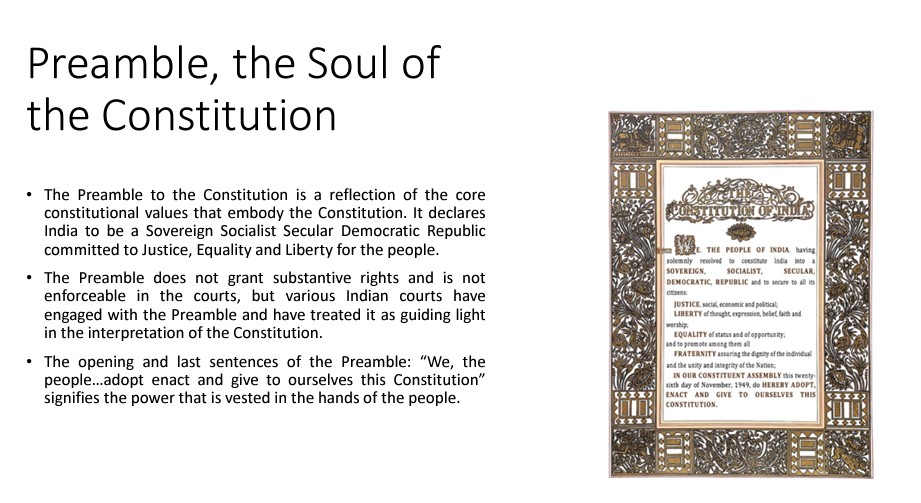A message in the name of Sachin Paul who is said to be an IAS (retd.) requesting to vote for Congress, to stop BJP’s plan to declare India a Hindu nation, is being widely shared across social media platforms. The message further elaborates on the Constitutional obligations to be followed to amend the Constitution accordingly. Through this article let’s fact-check the claim made in the post.

Claim: Retired IAS Sachin Paul’s message to stop BJP from declaring India a Hindu nation.
Fact: We could not find any retired IAS officer with the name Sachin Paul, which implies that the viral message is attributed to a fictional officer. Moreover, secularism is intrinsic to the Constitution, and it is explicitly added to the preamble. Further the Supreme Court in many instances held that preamble forms the basic structure of the Constitution, and the Parliament could not amend the basic structure. Hence, the claim made in the post is FALSE.
The message circulating on social media in the name of a retired IAS Sachin Paul is most likely fictional, as we could not find any IAS officer with the name Sachin Paul in the list of IAS officers served to date.
Can India be declared a Hindu nation by amending the Constitution?
The Constitution of India asserts that India is a Secular nation. This concept of secularism is added to the preamble of the Constitution through the 42nd amendment, in 1976.

In fact, some provisions of the Constitution like Article 25 (freedom of religion) and Article 26 (freedom to establish religious institutions), as well as Article 15 (right against discrimination, including on the basis of religion) reflect that idea of secularism is intrinsic to the Constitution, even before the word ‘secular’ is explicitly added to the preamble.
Although Article 368 of the Constitution empowers the Parliament to amend the Constitution, this provision does allow it to alter the basic structure of the Constitution. The Supreme Court in the Kesavananda Bharati case (1973) introduced the doctrine of ‘basic structure’ and ruled that the constituent power of the Parliament under Article 368 does not empower it to alter the basic structure of the Constitution.
The Supreme Court in SR Bommai vs. Union of India (1994), held that the preamble forms the basic structure of the Constitution and asserted the view that secularism is intrinsic to the Constitution. Later, the apex court, on multiple occasions (Minerva Mills case 1980) reiterated the limits to the power of Parliament to amend the basic structure.
Hence, this establishes that declaring India a Hindu nation with the mere majority of the Parliament, is not easy as claimed in the post, as it is subject to judicial review.
To sum it up, this message with a request to vote for Congress is attributed to a fictional IAS officer Sachin Paul



